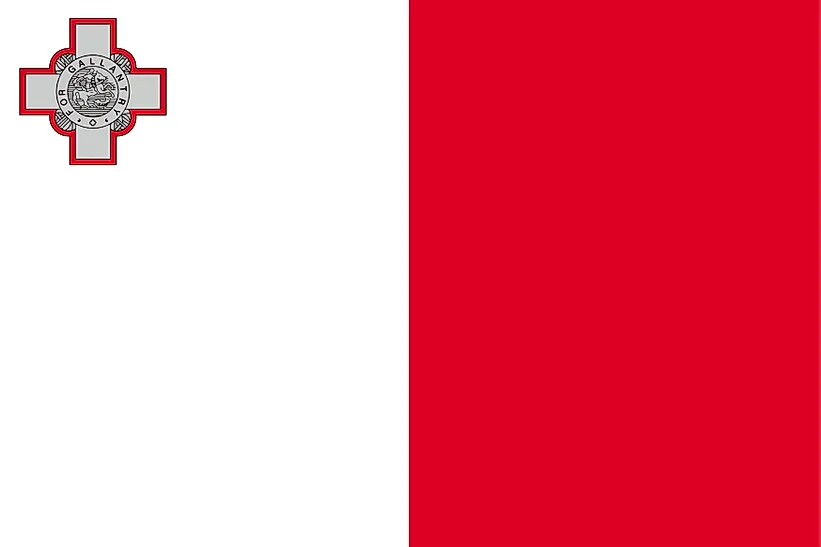
マルタ
| 大陸 | ヨーロッパ |
| 資本金 | バレッタ |
| 人口 | 415,196 |
| GDP | $16.32 億ドル |
| 一人当たりGDP | $37,900 |
| ダイヤルコード | +356 |
| ISOコード(2文字) | MT |
| ISOコード(3文字) | MLT |
マルタの風景






マルタについて
古代の歴史と地中海の魅力が融合した国、マルタへようこそ。316平方キロメートルに約51万6千人の人口を擁するマルタは、顕著な歴史的遺産と近代的なヨーロッパのアイデンティティを併せ持ち、世界最小でありながら最も人口密度の高い国のひとつです。
地理的特徴と自然の美しさ
マルタの地理には3つの主要な島がある:マルタ島、ゴゾ島、コミノ島です。この群島には、ドラマチックな石灰岩の崖、隠れた入り江、地中海の透き通った海があり、素晴らしい海岸風景を作り出しています。
その景観には、ユニークな地層、先史時代の寺院、そして「紺碧の窓」(2017年に崩壊するまで)や「青の洞窟」のような海岸の特徴的な地形が含まれる。この国の地中海性気候は、島々の石灰岩の地形に適応した独自の生態系を支えている。
保護地域には、さまざまな自然保護区や海洋保護区がある。同国の環境保護への取り組みは、限られた天然資源と独特の沿岸環境の保護に重点が置かれている。
文化遺産と伝統
マルタの文化は、島々を支配してきた様々な文明の影響が魅力的に融合したものです。この国の遺産には、ピラミッドよりも古い先史時代の神殿、中世の都市、ユネスコの世界遺産に登録されているヴァレッタを中心としたバロック建築があります。
伝統芸術には、複雑なレース作り、フィリグリー・ジュエリー、吹きガラスなどがある。ラテン文字で書かれた独特のセム語であるマルタ語は、島の多様な歴史的影響を反映しています。
マルタ料理は地中海と北アフリカの味を組み合わせたもので、パスティッツィ(香ばしいお菓子)やウサギのシチューなどが名物です。伝統的なお祭り、特に守護聖人を祝うカラフルなフェスタは、地域生活の中心であり続けています。
歴史の旅
マルタの歴史は、先史時代の巨石神殿から、フェニキア、ローマ、アラブ、ノルマン、イギリスの時代を経て、1964年の独立にまで及ぶ。この島々の戦略的な位置は、地中海の歴史にとって極めて重要である。
重要な時代には、1565年の大包囲戦、聖ヨハネ騎士団の支配、イギリスの植民地時代、第二次世界大戦中の英雄的な抵抗があり、そのために国民全員がジョージ十字勲章を授与された。近代共和国およびEU加盟国としてのマルタの進化は、その継続的な適応を示しています。
現代の経済状況
今日のマルタ経済は、観光、金融サービス、デジタル・イノベーションを組み合わせている。マルタは、歴史的な特徴を保ちながら、近代的なサービス経済への転換に成功している。
最近の取り組みでは、ブロックチェーン技術、デジタルゲーム、持続可能な観光に焦点を当てている。マルタの戦略的立地と整備されたインフラは、地中海ビジネスのハブとしての地位を支えている。
国際関係とグローバルポジション
マルタは欧州連合(EU)や様々な地中海フォーラムに積極的に参加し、地域対話を推進している。文明の交差点としての歴史的経験が、マルタの外交的役割に貢献している。
ご存知でしたか?
- マルタには、ピラミッドよりも千年も前に建てられた世界最古の独立建造物がある。
- 首都ヴァレッタ全体がユネスコの世界遺産に登録されている?
- マルタ十字架は、保護と勇気の世界的シンボルとなった?
- 島々は、『ゲーム・オブ・スローンズ』や『髑髏島の巨神』など、数多くの国際的作品の撮影地となっている。
結論
マルタは、歴史的遺産と現代的革新のユニークな組み合わせを象徴しています。先史時代の神殿からデジタル経済、伝統的な祭りから現代アートシーンまで、マルタは豊かな遺産を守りながら進化し続けています。持続可能な開発や人口密度などの課題に取り組む一方で、マルタは経済革新を促進しながら、地中海文化の架け橋としての役割に尽力し続けています。